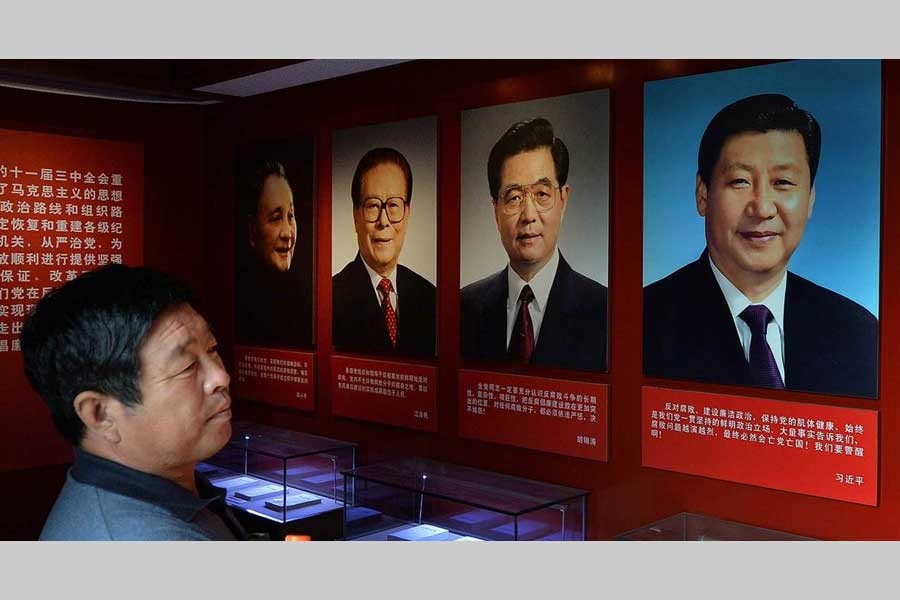Forty years ago this month, China's leaders set the country on a path of reform that has produced the most dramatic economic transformation in history. Mao Zedong had died two years earlier, in 1976, and the newly rehabilitated Deng Xiaoping succeeded in stamping his vision of economic development and modernisation on the Third Plenary Session of the Eleventh Central Committee held in December 1978. In the four decades since, China has transformed itself into an economic powerhouse, portending an equally momentous makeover of the global economy and geopolitics.
China's reforms started in agriculture, where the crushing burden of state controls was relaxed. Through the dual-track pricing mechanism, farmers were given market incentives. The household responsibility system allowed them greater control over the land they worked. Farmers responded quickly, increasing their efficiency and output.
Reforms were subsequently broadened and extended into other areas. Non-agricultural production incentives were bolstered through a hybrid form of ownership called Township and Village Enterprises (TVEs). As the reforms spread to cities, state enterprises gained more autonomy and were encouraged to become entrepreneurial. Incentives were created for provinces and localities to invest and spur economic growth. And the growth of Special Economic Zones (SEZs) in the 1990s turned China decisively toward integration with the world economy.
The general thrust of these reforms was to increase the economy's market orientation and external openness. But while China's share of international trade and private investment grew and that of the state sector steadily shrank in relative terms, the authorities retained a firm hand in managing the economy. Economic restructuring and diversification were promoted through a range of industrial policies. Foreign investors were required to enter into joint ventures with domestic firms and to increase the use of local inputs. The exchange rate and international financial flows remained controlled for the most part.
Through it all, China's leadership did not follow any guidebook and resolutely marched to the beat of its own drummer. Reform was guided by neither communist teachings nor free-market dogma. If senior policymakers followed one overarching principle, it was what might be called "pragmatic experimentalism." As Deng famously said, what mattered was not the colour of the cat, but whether it caught the mice.
Given the peculiarities of China's experience, it is not surprising that there remains considerable debate about the lessons to be drawn from it. For many in the West, China demonstrates the benefits of reliance on markets and economic liberalisation. Yet if China were an economic basket case today, I suspect the same voices would be quick to attribute the failure to the continued intrusiveness of the Chinese state. For others, China demonstrates the intrinsic superiority of the state-led model. Yet many of the same policies, such as dual-track pricing or domestic content requirements, have failed in other settings.
These opposing perspectives can be reconciled. China has not violated the tenets of mainstream economics so much as it has offered a master class in applying them creatively in complicated political and economic terrain. Dual-track pricing provided market incentives at the margin without undermining the fiscal revenues. TVEs spurred private entrepreneurship, despite weak frameworks for property rights and contract enforcement. SEZs spurred exports and foreign investment without undermining employment among protected state enterprises. Industrial policies allowed infant industries to internalise learning spillovers. In short, China represents the triumph of practical economics - in which second-best strategies, market failures, general equilibrium, and political economy prevail - over the simplistic reasoning of Econ 101.
The biggest test for the Chinese model may be yet to come. Throughout the country's economic transformation, the political primacy of the Communist Party of China was never in question. But outside observers expected that continued economic development would eventually lead to political liberalisation. Instead, under President Xi Jinping, China has taken a decidedly more authoritarian turn. That is bad news for the hundreds of millions of Chinese whose political freedoms are being ever more tightly circumscribed.
Political repression could be bad news for the economy as well, for at least two reasons. First, people's ability to speak freely provides an advance-warning mechanism for policies that might eventually fail, enabling the authorities to change course before more damage is done. Second, political competition provides institutional mechanisms for channelling opposition, which otherwise might spill over to the streets and fuel civil disorder.
China's leaders seem to be betting that they can avoid both types of problems. They believe they have their ears sufficiently to the ground that they can remain responsive to any brewing discontent. And they hope they can exercise social control through facial recognition and other new technologies, which they have taken the lead in deploying.
The conventional wisdom among social scientists is that the demands of advanced economies and growing middle classes can be met only through greater political freedoms and competition. The Chinese political elite are sceptical, and not without reason. When they look at the West nowadays, they see populism, demagoguery, and deep divisions, rather than harmonious, inclusive societies. Their attempt to combine a high-growth, technologically sophisticated economy with reinforced authoritarianism is perhaps their most ambitious experiment to date.
Dani Rodrik, Professor of International Political Economy at Harvard University's John F. Kennedy School of Government, is the author of Straight Talk on Trade: Ideas for a Sane World Economy.
Copyright: Project Syndicate, 2018.
www.project-syndicate.org


